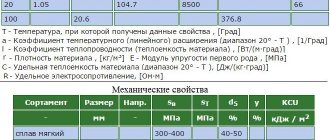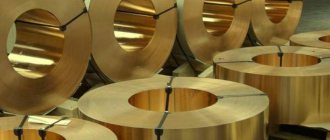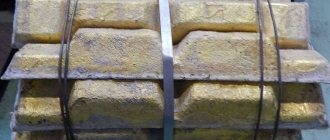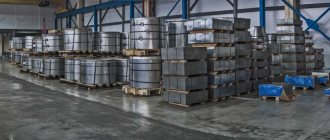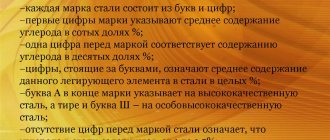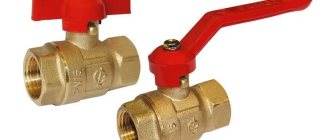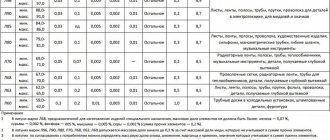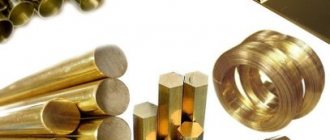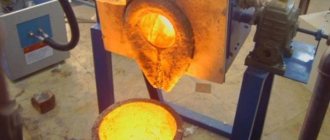GOST 33729-2016 GOST 20996.3-2016 GOST 31921-2012 GOST 33730-2016 GOST 12342-2015 GOST 19738-2015 GOST 28595-2015 GOST 28058-2015 GOST 20996.11-2015 GOST 9816.5-2014 GOST 20996.12-2014 GOST 20996.7-2014 GOST R 56306-2014 GOST R 56308-2014 GOST 20996.1-2014 GOST 20996.2-2014 GOST 20996.0-2014 GOST 16273.1-2014 GOST 9816.0-2014 GOST 9816.4-2014 GOST R 56142-2 014 GOST R 54493-2011 GOST 13498-2010 GOST R 54335- 2011 GOST 13462-2010 GOST R 54313-2011 GOST R 53372-2009 GOST R 53197-2008 GOST R 53196-2008 GOST R 52955-2008 GOST R 50429.9-92 GOST 6836-2002 GOST 6835-20 02 GOST 18337-95 GOST 13637.9- 93 GOST 13637.8-93 GOST 13637.7-93 GOST 13637.6-93 GOST 13637.5-93 GOST 13637.4-93 GOST 13637.3-93 GOST 13637.2-93 GOST 13637.1-93 GOST 13637.0-93 GOST 1 3099-2006 GOST 13098-2006 GOST 10297-94 GOST 12562.1-82 GOST 12564.2-83 GOST 16321.2-70 GOST 4658-73 GOST 12227.1-76 GOST 16274.0-77 GOST 16274.1-77 GOST 22519.5-77 GOST 22720.4-77 GOST 22519.4-7 7 GOST 22720.2-77 GOST 22519.6-77 GOST 13462- 79 GOST 23862.24-79 GOST 23862.35-79 GOST 23862.15-79 GOST 23862.29-79 GOST 24392-80 GOST 20997.5-81 GOST 24977.1-81 GOST 25278.8-82 GOST 20996.11-82 G OST 25278.5-82 GOST 1367.7-83 GOST 26239.9-84 GOST 26473.1-85 GOST 16273.1-85 GOST 26473.2-85 GOST 26473.6-85 GOST 25278.15-87 GOST 12223.1-76 GOST 12645.7-77 GOST 12645.1-77 GOST 12645.6-77 GOST 22720 .3-77 GOST 12645.4-77 GOST 22519.7-77 GOST 22519.2- 77 GOST 22519.0-77 GOST 12645.5-77 GOST 22517-77 GOST 12645.2-77 GOST 16274.9-77 GOST 16274.5-77 GOST 22720.0-77 GOST 22519.3-77 GOST 12560.1-78 GOST 125 58.1-78 GOST 12561.2-78 GOST 12228.2-78 GOST 18385.4-79 GOST 23862.30-79 GOST 18385.3-79 GOST 23862.6-79 GOST 23862.0-79 GOST 23685-79 GOST 23862.31-79 GOST 23862.18-79 GOST 23862.7-79 GOST 23862 .1-79 GOST 23862.20-79 GOST 23862.26-79 GOST 23862.23- 79 GOST 23862.33-79 GOST 23862.10-79 GOST 23862.8-79 GOST 23862.2-79 GOST 23862.9-79 GOST 23862.12-79 GOST 23862.13-79 GOST 23862.14-79 GOST 12225-80 G OST 16099-80 GOST 16153-80 GOST 20997.2-81 GOST 20997.3-81 GOST 24977.2-81 GOST 24977.3-81 GOST 20996.4-82 GOST 14338.2-82 GOST 25278.10-82 GOST 20996.7-82 GOST 25278.4-82 GOST 12556.1-82 GOST 14339 .1-82 GOST 25278.9-82 GOST 25278.1-82 GOST 20996.9- 82 GOST 12554.1-83 GOST 1367.4-83 GOST 12555.1-83 GOST 1367.6-83 GOST 1367.3-83 GOST 1367.9-83 GOST 1367.10-83 GOST 12554.2-83 GOST 26239.4-84 GOST 9816. 2-84 GOST 26473.9-85 GOST 26473.0-85 GOST 12645.11-86 GOST 12645.12-86 GOST 8775.3-87 GOST 27973.0-88 GOST 18904.8-89 GOST 18904.6-89 GOST 18385.0-89 GOST 14339.5-91 GOST 14339.3-91 GOST 29103 -91 GOST 16321.1-70 GOST 16883.2-71 GOST 16882.1- 71 GOST 12223.0-76 GOST 12552.2-77 GOST 12645.3-77 GOST 16274.2-77 GOST 16274.10-77 GOST 12552.1-77 GOST 22720.1-77 GOST 16274.4-77 GOST 16274.7-77 GOST 12228.1-78 GOST 12561.1-78 GOST 12558.2-78 GOST 12224.1-78 GOST 23862.22-79 GOST 23862.21-79 GOST 23687.2-79 GOST 23862.25-79 GOST 23862.19-79 GOST 23862.4-79 GOST 18385.1-79 GOST 23687.1-79 GOST 23 862.34-79 GOST 23862.17-79 GOST 23862.27-79 GOST 17614- 80 GOST 12340-81 GOST 31291-2005 GOST 20997.1-81 GOST 20997.4-81 GOST 20996.2-82 GOST 12551.2-82 GOST 12559.1-82 GOST 1089-82 GOST 12550.1-82 GOST 20996. 5-82 GOST 20996.3-82 GOST 12550.2-82 GOST 20996.8-82 GOST 14338.4-82 GOST 25278.12-82 GOST 25278.11-82 GOST 12551.1-82 GOST 25278.3-82 GOST 20996.6-82 GOST 25278.6-82 GOST 14338.1-82 GOST 1433 9.4-82 GOST 20996.10-82 GOST 20996.1-82 GOST 12645.9- 83 GOST 12563.2-83 GOST 19709.1-83 GOST 1367.11-83 GOST 1367.0-83 GOST 19709.2-83 GOST 12645.0-83 GOST 12555.2-83 GOST 1367.1-83 GOST 9816.3-84 GOST 9816 .4-84 GOST 9816.1-84 GOST 9816.0-84 GOST 26468-85 GOST 26473.11-85 GOST 26473.12-85 GOST 26473.5-85 GOST 26473.7-85 GOST 16273.0-85 GOST 26473.3-85 GOST 26473.8-85 GOST 26473.13-85 GOST 25278 .13-87 GOST 25278.14-87 GOST 8775.1-87 GOST 25278.17- 87 GOST 18904.1-89 GOST 18904.0-89 GOST R 51572-2000 GOST 14316-91 GOST R 51704-2001 GOST 16883.1-71 GOST 16882.2-71 GOST 16883.3-71 GOST 8774-75 GOST 1222 7.0-76 GOST 12797-77 GOST 16274.3- 77 GOST 12553.1-77 GOST 12553.2-77 GOST 16274.6-77 GOST 22519.1-77 GOST 16274.8-77 GOST 12560.2-78 GOST 23862.11-79 GOST 23862.36-79 GOST 23862.3-79 GOST 23862.5-79 GOST 18385.2-79 GOST 23862.28-79 GOST 16100-79 GOST 23862.16-79 GOST 23862.32-79 GOST 20997.0-81 GOST 14339.2-82 GOST 12562.2-82 GOST 25278.7-82 GOST 20996.12-82 GOST 12645.8-82 GOST 20996 .0-82 GOST 12556.2-82 GOST 25278.2-82 GOST 12564.1- 83 GOST 1367.5-83 GOST 25948-83 GOST 1367.8-83 GOST 1367.2-83 GOST 12563.1-83 GOST 9816.5-84 GOST 26473.4-85 GOST 26473.10-85 GOST 12645.10-86 GOST 8775. 2-87 GOST 25278.16-87 GOST 8775.0-87 GOST 8775.4-87 GOST 12645.13-87 GOST 27973.3-88 GOST 27973.1-88 GOST 27973.2-88 GOST 18385.6-89 GOST 18385.7-89 GOST 28058-89 GOST 18385.5-89 GOST 10928-90 GOST 14338.3-91 GOST 10298-79 GOST R 51784 -2001 GOST 15527-2004 GOST 28595-90 GOST 28353.1-89 GOST 28353.0-89 GOST 28353.2-89 GOST 28353.3-89 GOST R 52599-2006
- gost-15527-2004.pdf (375.46 KiB)
GOST 15527-2004
GOST 15527−2004 Group B54
INTERSTATE STANDARD COPPER-ZINC ALLOYS (BRASS), PRESSURE TREATABLE
Stamps
Pressure treated copper zinc alloys (brasses). Grades
MKS 77.120.99 OKP 18 0000
Date of introduction 2005−07−01
Preface
1 DEVELOPED by the Russian Federation, Interstate Technical Committee for Standardization MTK 106 “Color
UzbekistanUzstandardUkraineGospotrebstandart of Ukraine3 By Order of the Federal Agency for Technical Regulation and Metrology dated October 25, 2004 N 42-st, the interstate standard GOST 15527–2004 was put into effect directly as a national standard of the Russian Federation on July 1, 2005.
4 INSTEAD OF GOST 15527–70, an amendment was made, published in IUS N 6, 2005
Amendment made by database manufacturer
AMENDED Change No. 1, adopted by the Interstate Council for Standardization, Metrology and Certification (protocol dated May 12, 2011 No. 39). Developer state Russia. By order of Rosstandart dated November 15, 2011 N 543-st, it came into force on the territory of the Russian Federation from February 1, 2012
Change No. 1 was made by the database manufacturer according to the text of IMS No. 1, 2012
1 area of use
This standard applies to pressure-processed copper-zinc alloys (brass). When designating brass, the brand should be indicated in accordance with this standard.
What does GOST 15527-2004 define?
The current GOST 15527-2004 is established for brass alloys and determines the grades and composition of components. Copper-zinc alloys are divided into simple and special. Simple - consist of two main components: copper and zinc, impurities are contained in minute quantities. Two-component brass is designated by the letter “L” and a two-digit number, which indicates the percentage of copper, for example: brass L63, GOST 15527.
Multicomponent special alloys are alloyed with components such as lead, aluminum, iron, etc. Additional elements improve the performance properties of the brass alloy. In the name of the brand of special brass, in addition to the obligatory letter “L”, other letters are indicated that indicate alloying elements and their percentage. The content of additional elements is also established by GOST 15527-2004.
Special brasses are grouped according to the presence of the main alloying component: tin, lead, nickel. Complex alloyed brass alloys are listed in a separate table.
2a Normative references
GOST 1652.1−77 (ISO 1554−76) Copper-zinc alloys. Methods for determining copper GOST 1652.2−77 (ISO 4749−84) Copper-zinc alloys. Methods for determination of lead GOST 1652.3−77 (ISO 1812−76, ISO 4748−84) Copper-zinc alloys. Methods for determining iron GOST 1652.4−77 Copper-zinc alloys. Methods for determining manganese GOST 1652.5−77 (ISO 4751−84) Copper-zinc alloys. Methods for determining tin GOST 1652.6−77 Copper-zinc alloys. Methods for determining antimony GOST 1652.7−77 Copper-zinc alloys. Methods for determining bismuth GOST 1652.8−77 Copper-zinc alloys. Methods for determining arsenic GOST 1652.9−77 (ISO 7266−84) Copper-zinc alloys. Methods for determining sulfur GOST 1652.10−77 Copper-zinc alloys. Methods for determining aluminum GOST 1652.11−77 Copper-zinc alloys. Methods for determining nickel GOST 1652.12−77 Copper-zinc alloys. Methods for determining silicon GOST 1652.13−77 Copper-zinc alloys. Methods for determining phosphorus GOST 9716.1−79 Copper-zinc alloys. Method of spectral analysis using metal standard samples with photographic recording of the spectrum GOST 9716.2−79 Copper-zinc alloys. Method of spectral analysis using metal standard samples with photoelectric recording of the spectrum GOST 9716.3−79 Copper-zinc alloys. Method of spectral analysis of oxide samples with photographic recording of the spectrum
GOST 24978–91 (ISO 4740−85) Copper-zinc alloys. Methods for determining zinc GOST 25086−87 Non-ferrous metals and their alloys. General requirements for methods of analysis ST SEV 543−77 Numbers. Recording and rounding rules. Section 2a. (Introduced additionally, Amendment No. 1).
GOST 15527-2004: popular brands of brass
The most popular are simple brass alloys of the L80, L68, L63 grades, GOST 15527-2004. According to the requirements of the standard, up to 0.3% nickel is allowed in these grades. When producing an alloy, the content of other alloying components - aluminum, silicon, tin and manganese - can be changed according to customer requirements.
Common grades of plain brass:
- brass L68: copper content in the alloy – 68%. The metal is resistant to corrosion, has mechanical strength, and can be easily processed under pressure in hot and cold states. Stamped products are made from L68 alloy. For the production of special-purpose products, brass is suitable, GOST 15527-2004, with the maximum permissible content of additional elements specified in the standard;
- brass L80: refers to semi-tombacs - alloys with a copper concentration of 80%. Increased copper content improves performance properties and at the same time increases the cost of the alloy. The metal is used for the manufacture of wire, mesh, and other rolled metal products;
- brass L63: GOST 15527-2004 determines the concentration of copper in the structure at 63%. This is the most popular brand of brass due to its good working properties at a relatively low cost. The alloy is perfectly deformable in hot and cold conditions and is used for the production of rolled metal: rods, wire, strips, tapes and pipes. L63 brass is used to make spare parts for cars, parts of refrigeration and heat exchange equipment.
Hygienic brass alloy is used for the manufacture of food industry equipment. However, brass L63, GOST 15527-2004, which is used for contact with food products, should not contain lead in an amount exceeding 0.3%.
Leader in demand among special brasses
In the category of multicomponent brass alloys, the most common is the LS59-1 brand. The chemical composition is also regulated by the standard: brass, GOST 15527, contains 57–60% copper, up to 1.9% lead, 0.5% iron and other alloying elements. This metal is processed by pressure, but is not suitable for forging: it breaks under impact loads. Brass is used to make rods and sheets. The material is durable, resistant to abrasion; LS59-1 brass is used to make components of drilling rigs, bridge ropes, and parts of industrial machines.
In complex alloyed brasses, the percentage of manganese, aluminum and tin is determined by agreement with the consumer. Brass alloys, which are manufactured in accordance with GOST 15527-2004, are in demand in industry and other sectors of the national economy.
Properties of LS59-1
Mechanical properties differ for different semi-finished products due to the production method of LS59-1 brass.
Mechanical properties of LS59-1 at T=20oC
| Assortment | sв — Short-term strength limit | d5 — Elongation at break |
| MPa | % | |
| Pressed pipes, GOST 494-90 | 390 | |
| Pressed rod, GOST 2060-2006 | 360 | 22 |
| Solid rod, GOST 31366-2008 | 490 | 7 |
| Soft rod, GOST 31366-2008 | 330 | 25 |
| Soft wire, GOST 1066-90 | 340 | 25-30 |
| Solid wire, GOST 1066-90 | 440-640 | 1-8 |
| Cold-rolled hard strip, GOST 931-90 | 460-610 | 5 |
| Cold rolled soft strip, GOST 931-90 | 340-470 | 25 |
| Hot rolled strip, GOST 931-90 | 360-490 | 18 |
In reality, brass rod LS59-1 is produced semi-solid according to automatic GOST.
Brass wire LS59-1 is produced both hard and soft; unlike rods, it can often be replaced with L63 brass. Fur properties of brass rods LS59-1
| Preparation method | Delivery status of bars | Diameter, key number or square side, mm | Tensile strength σв, MPa (kgf/mm2) | Elongation after break % δ5 | Elongation after break % δ10 | Hardness NV - according to Brinell | Hardness HV - Vickers |
| soft rods | From 3 to 50 mm | 330 (34) | 25 | 22 | 80 | 80 | |
| Semi-solid | From 3 to 12 mm | 410 (42) | 10 | 8 | 100 | 121 | |
| Pulled | Semi-solid | From 13 to 20 mm | 390 (40) | 15 | 12 | 100 | 121 |
| Semi-solid | From 21 to 40 mm | 390 (40) | 18 | 15 | 100 | 121 | |
| Solid bars | From 3 to 12 mm | 490 (50) | 7 | 5 | 130 | 171 | |
| Pressed | From 10 to 50 mm | 360 (37) | 22 | 18 | — | 80 | |
| pressed | From 55 to 180 mm | 360 (37) | 22 | 18 | — | 70 |
Foundry and technological properties LS59-1
| Melting point LS59-1 | 900 °C |
| Hot processing temperature LS59-1 | 780 – 820 °C |
| Annealing temperature LS59-1 | 600 – 650 °C |
Mechanical characteristics
| Section, mm | σB, MPa | d5, % | d10 | d10 | Brinell hardness, MPa | HV, MPa |
| Cold rolled strip as delivered according to OST 4.021.078-92 (transverse samples) | ||||||
| 0.14-2 | 340-490 | — | ≥25 | — | — | — |
| 0.1-2 | 460-640 | — | ≥5 | — | — | — |
| Cold-rolled strips and sheets in delivery condition according to GOST 2208-2007 (samples) | ||||||
| — | 340-470 | — | ≥25 | — | ≥100 | ≥105 |
| — | ≥590 | — | ≥3 | — | — | — |
| — | 400-500 | — | ≥10 | — | — | — |
| — | 460-610 | — | ≥5 | — | ≥200 | — |
| Hot-rolled sheets in delivery condition in accordance with GOST 931-90, OST 4.021.050-92 sheets and strips in accordance with GOST 2208-2007 (samples) | ||||||
| 2-25 | 360-490 | — | ≥18 | — | — | — |
| Cold-rolled sheets and strips in delivery condition according to GOST 931-90, OST 4.021.050-92, OST 4.021.067-92 (transverse samples) | ||||||
| 3-12 | 340-470 | — | ≥25 | — | ≥100 | — |
| 3-10 | 460-610 | — | ≥5 | — | ≥200 | — |
| Cold-deformed square wire as delivered according to OST 4.021.112-92 (longitudinal samples) | ||||||
| 3.9-7 | ≥340 | — | ≥30 | — | — | — |
| 3.9-5 | 400-640 | — | ≥5 | — | — | — |
| 5-7 | 440-640 | — | ≥8 | — | — | — |
| Cold-deformed round wire for general purpose as delivered in accordance with OST 4.021.105-92 (samples) | ||||||
| 0.7-1 | ≥340 | — | ≥25 | — | — | — |
| 1.1-1.8 | ≥340 | — | ≥27 | — | — | — |
| 2-12 | ≥340 | — | ≥30 | — | — | — |
| 2-5 | ≥390 | — | ≥10 | — | — | — |
| 5.6-12 | ≥390 | — | ≥12 | — | — | — |
| 0.7-1 | ≥490 | — | ≥1 | — | — | — |
| 1.1-1.8 | ≥470 | — | ≥3 | — | — | — |
| 2-5 | 490-640 | — | ≥5 | — | — | — |
| 5.6-12 | 440-640 | — | ≥8 | — | — | — |
| Hexagonal cold-deformed wire as delivered according to OST 4.021.116-92 (longitudinal samples) | ||||||
| 3-12 | ≥340 | — | ≥30 | — | — | — |
| 3-5 | 490-640 | — | ≥5 | — | — | — |
| 5-12 | 440-640 | — | ≥8 | — | — | — |
| Rods in delivery condition according to OST 4.021.020-92, GOST 2060-2006 (longitudinal samples) | ||||||
| 10-50 | ≥360 | ≥22 | — | ≥18 | — | 80-140 |
| 55-160 | ≥360 | ≥22 | — | ≥18 | — | 70-140 |
| 3-50 | ≥330 | ≥25 | — | ≥22 | ≥80 | 80-140 |
| 13-20 | ≥390 | ≥15 | — | ≥12 | ≥100 | 121-170 |
| 21-40 | ≥390 | ≥18 | — | ≥15 | ≥100 | 121-170 |
| 3-12 | ≥410 | ≥10 | — | ≥8 | ≥100 | 121-170 |
| 3-12 | ≥490 | ≥7 | — | ≥5 | ≥130 | ≥171 |
| Square rods according to OST 4.021.037-92 in delivery condition (longitudinal samples, the diameter of the inscribed circle is indicated in the cross-section) | ||||||
| 41-80 | ≥360 | ≥22 | — | ≥18 | — | 70-140 |
| 3-36 | ≥330 | ≥25 | — | ≥22 | — | 80-140 |
| 12-30 | ≥390 | ≥15 | — | ≥12 | — | 121-170 |
| 30-36 | ≥390 | ≥18 | — | ≥15 | — | 121-170 |
| 5-12 | ≥410 | ≥10 | — | ≥8 | — | 121-170 |
| 5-12 | ≥490 | ≥7 | — | ≥5 | — | ≥171 |
| Rods of increased ductility as delivered in accordance with GOST 2060-2006 (longitudinal samples) | ||||||
| 10-180 | ≥360 | ≥23 | — | ≥20 | — | — |
| 3-50 | ≥340 | ≥32 | — | ≥30 | — | — |
| 13-20 | ≥430 | ≥16 | — | ≥14 | — | — |
| 21-40 | ≥410 | ≥20 | — | ≥17 | — | — |
| 3-12 | ≥430 | ≥14 | — | ≥12 | — | — |
| 3-12 | ≥490 | ≥12 | — | ≥9 | — | — |
| Pressed rods of rectangular cross-section in delivery condition according to GOST 6688-91 (longitudinal samples) | ||||||
| — | ≥370 | — | — | ≥21 | — | — |
| Hexagonal bars according to OST 4.021.041-92 in delivery condition (longitudinal samples) | ||||||
| 41-80 | ≥360 | ≥22 | — | ≥18 | — | 70-140 |
| 5-50 | ≥330 | ≥25 | — | ≥22 | — | 80-140 |
| 12-20 | ≥390 | ≥15 | — | ≥12 | — | 121-170 |
| 20-36 | ≥390 | ≥18 | — | ≥15 | — | 121-170 |
| 5-12 | ≥410 | ≥10 | — | ≥8 | — | 121-170 |
| 5-12 | ≥490 | ≥7 | — | ≥5 | — | ≥171 |
| Pressed pipes in delivery condition according to GOST 494-90 | ||||||
| ≥390 | — | — | ≥20 | — | — |
Application of LS59-1
Due to its good machinability, including at high speeds, small chips and the cleanliness of the machined surface, mass production of very precise small parts is possible from LS 59-1, which makes this brass indispensable in many areas. The most commonly produced brass rod is LS59-1 for automatic processing. However, one of the important disadvantages of this alloy is a sharp increase in brittleness already at average temperatures, starting from 200 °C. Therefore, in rotating sliding friction parts, where strong heating is possible, LS59-1 cannot be used and BrAZH9-4 bronze is used instead. Customers of rotation parts and bushings need to carefully check what material their order is made from, since in appearance BrAZh bronze and LS59-1 brass are indistinguishable - a yellow, shiny, golden alloy. Alloy LS59-1 has anti-friction properties and, therefore, it can be used for the manufacture of various parts for working under high friction, for example, sliding bearings for the manufacture of which brass rods are used. Since this alloy has a higher hardness than other brass (copper-zinc) alloys and is resistant to abrasion, sheets from it can be used for the manufacture of guide elements for drilling rigs, various machine tools (guides for the movement of carriages), and bridge ropes.
Chemical composition of brass LS59-1 in the certificate for brass rod:
Anti-corrosion properties
Thanks to the separate phase that lead forms, the alloy has good resistance to harmful weather conditions, temperature changes, and seasonal precipitation. In addition, relative stability can be observed in an alkaline environment. In terms of resistance to corrosion processes, this brand is superior to L63.
LS59-1 reacts poorly to contact with fatty and mineral acids, ore waters, and hydrogen sulfide. It should also not be used in conjunction with aluminum and iron, as they will accelerate the deterioration of brass products.
Corrosion resistance
Due to the presence of lead in the chemical composition of brass of the brand in question, a separate phase is formed in its internal structure, which has a positive effect not only on its workability, but also on its resistance to corrosion. Compared to other brass alloys, LS59-1 is more resistant to corrosion. are not subject to cracking and oxidation when used in conditions of high humidity and temperature changes.
However, there is no need to talk about the exceptionally high corrosion resistance of LS59-1: in this parameter, this alloy is similar to brasses of other brands. In particular, it is not recommended to use it in cases where it will come into contact with products made of iron, aluminum and zinc. In addition, the corrosion resistance of LS59-1 will be poor when:
- simultaneous exposure to high humidity and high pressure;
- contact with fatty acids;
- operation in hydrogen sulfide environment;
- contact with ore waters and mineral acids;
- constant interaction with oxidized solutions and chlorides.
The characteristics of brass allow the metal to be used for the production of shut-off and connecting valves operated at temperatures above 100 degrees
LS59-1 demonstrates its corrosion resistance well under the following operating conditions:
- atmospheric air, including that saturated with sea salt vapor;
- dry steam;
- liquid medium characterized by a very low content of salts and acids;
- freon, alcohol solutions and antifreeze;
- salty sea water in a sedentary state.
Application
Rolled metal products of various types and parameters are made from brass LS59-1. In this case, plastic deformation or the method of continuous casting is used. The alloy is used to produce sheets that are characterized by increased compaction and wear resistance.
LS59-1 is the main material for creating components and workpieces (fasteners, forgings, industrial fittings, etc.). The most recognizable rolled brass products are rods of various sections, wire and plates. These elements are widely used in mechanical engineering, aircraft manufacturing, construction, food and chemical industries.
